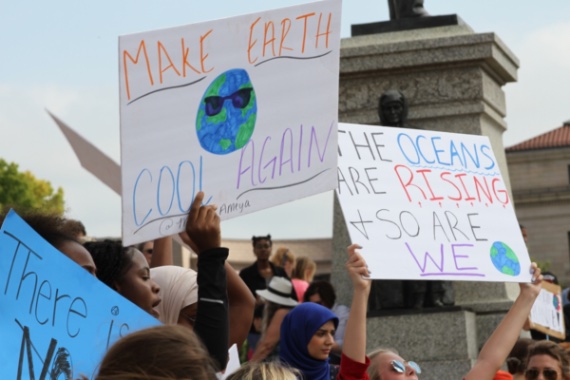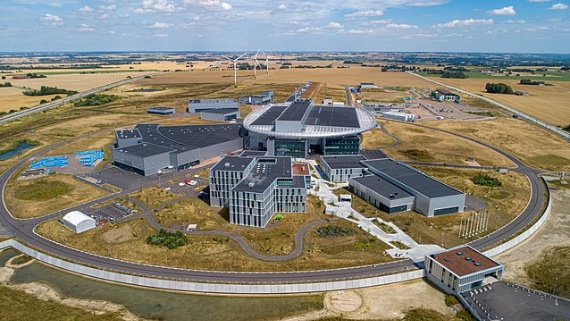As 2023 begins, it seems likely that, for the first time in three years, the COVID-19 pandemic will finally begin to fade from the headlines and the scientific news coverage, allowing other pressing issues, such as the fight against climate change, to return to centre stage. The scientific agenda for 2023 promises to be exciting, with a number of space milestones and the commissioning of major research facilities in the cards. However, as every year, some of the most significant breakthroughs and discoveries will almost certainly take us by surprise.
More action on climate
Action on climate change has never stood still, but it has never reached the cruising speed that experts are calling for. The year 2022 ended with a disappointing UN climate change conference COP 27 in Sharm el-Sheikh (Egypt), which failed to make any significant progress in moving away from fossil fuels. This year’s meeting will be COP 28 in Dubai (United Arab Emirates), which will have to finalise the only significant progress made at the previous one: the agreement to create a compensation fund for damages and losses for the most affected and vulnerable countries.

Dubai will not be the only important climate meeting this year. Last December, the Secretary General of the United Nations, António Guterres, announced he will convene a Climate Ambition Summit for next September with the aim of promoting a solidarity pact for the climate that represents a real and tangible effort. According to Guterres, the entities and governments attending this summit will have to pay a non-negotiable price of entry in the form of “credible, serious and new climate action and nature-based solutions that will move the needle forward and respond to the urgency of the climate crisis.” This summit will be held in parallel to the summit in New York on the Sustainable Development Goals (SDGs) of the UN’s 2030 Agenda.
Leaders meeting in search of these new solutions will have in their hands an essential compass, the full final result of the Sixth Assessment Report of the UN’s Intergovernmental Panel on Climate Change (IPCC). In the US, the Fifth National Climate Assessment will also be published, a work that is updated every four years and should encourage action by the Biden administration on climate issues.
Machines in space
In 2022, the reconquest of the Moon got underway and, although the next step will not come until 2024 with the Artemis 2 mission, in 2023 there will be no shortage of action in space. On the surface of the Moon, we will be following the progress of India’s Chandrayaan-3 mission, Japan’s HAKUTO-R Mission 1 and the United Arab Emirates’ Rashid Rover, as well as NASA’s Lunar Flashlight probe, a briefcase-sized satellite that aims to study lunar ice as a resource for future Moon missions.

The European Space Agency’s (ESA) Jupiter Icy Moons Explorer (JUICE) probe will embark on a more ambitious mission in April when it launches on an eight-year journey towards Jupiter and its icy moons. Upon arriving at the gas giant, the JUICE probe will enter the orbit of Ganymede, the largest moon of Jupiter and the Solar System, to study it and two other Jovian satellites (Callisto and Europa). This year ESA will launch its Euclid space telescope to study dark energy and dark matter, and NASA will send a probe to the metal asteroid Psyche and, in return, OSIRIS-REx will return to Earth with samples from the asteroid 101955 Bennu. And in 2023 we will no doubt continue to be surprised by the discoveries of the James Webb Space Telescope, whose analysis of exoplanet atmospheres may suggest biological signatures.
Elon Musk and his company SpaceX’s Starship is scheduled to have its orbital baptism of fire this year, as is New Glenn, an orbital launch vehicle developed by Jeff Bezos’ Blue Origin. But the success of Starship’s first dress rehearsal—which will serve NASA’s future manned flights—depends on whether the promise of the first major space tourism project, dearMoon, by Japanese entrepreneur Yusaku Maezawa, who in 2018 purchased all nine seats for Starship’s first trip to orbit the Moon (then scheduled for 2023), becomes a reality. Musk also intends to land an unmanned Starship on the Moon this year.
And machines on Earth
It is not only in space that we will see the debut of new technological devices in 2023. On Earth, several new research facilities will start operating or producing data. In the field of astronomy, the Vera C. Rubin Observatory in Chile, named to honour the astronomer who discovered dark matter, will be equipped with the largest digital camera ever constructed, whose images will be so large that displaying just one would require 370 4K ultra-high definition televisions. In fundamental physics, the European Spallation Source (located in Sweden) will be the world’s most powerful pulsed neutron source, making it possible to study the atomic structure of matter; the facility expects to welcome its first researchers later this year. And in China, 700 metres below the surface, the Jiangmen Underground Neutrino Observatory (JUNO) will be commissioned this year, offering excellent resolution in the study of neutrinos.

It won’t be a new facility, but rather a long-desired new target for the Karl G. Jansky Very Large Array (VLA) radio telescope array in New Mexico. In the 1997 film Contact, the astronomer played by Jodie Foster discovered the first alien signal there. In early 2023, a new digital signal processing instrument should be fully operational, bringing that challenge to life for the VLA, in its first major Search for Extraterrestrial Intelligence (SETI) campaign. And without leaving the realm of aliens, the results of the committee selected by NASA to study possible evidence of UFOs will be released, although experts don’t expect any major surprises.
Pandemic hangover
While science debates whether COVID-19 has entered an endemic phase, several countries are already treating it as such. The disease is still with us and the future evolution of the virus is never easily predictable, but scientific approaches have changed since the initial crisis. The main concern now is long-lasting or persistent COVID, on which we will await further details later this year. And in the vaccine arena, progress on new intranasal and oral formulations could make a difference, if any of them make it through clinical trials with sterilising immunity that prevents transmission.

On the positive side, the rapid development for COVID of the first RNA vaccines licensed in humans is now being applied against other viral diseases such as influenza, shingles and genital herpes, bacterial diseases such as tuberculosis, and parasitic infections such as malaria. Even cancer is now a target for RNA vaccines and this year we should expect to see progress in clinical trials in this area.
Outside the field of infectious diseases, biomedicine awaits the possible approval of the first gene therapy with the genome-editing tool CRISPR. The treatment, called exagamglogene autotemcel (exa-cel), works by genetically modifying the patient’s stem cells, and has been shown to be effective in clinical trials against two congenital blood diseases: sickle cell disease and beta thalassaemia. Finally, in 2023, both Europe and the US will decide whether to authorise the clinical use of lecanemab, a monoclonal antibody tested against Alzheimer’s disease and over which there is much controversy regarding its efficacy and safety.
Javier Yanes
Comments on this publication